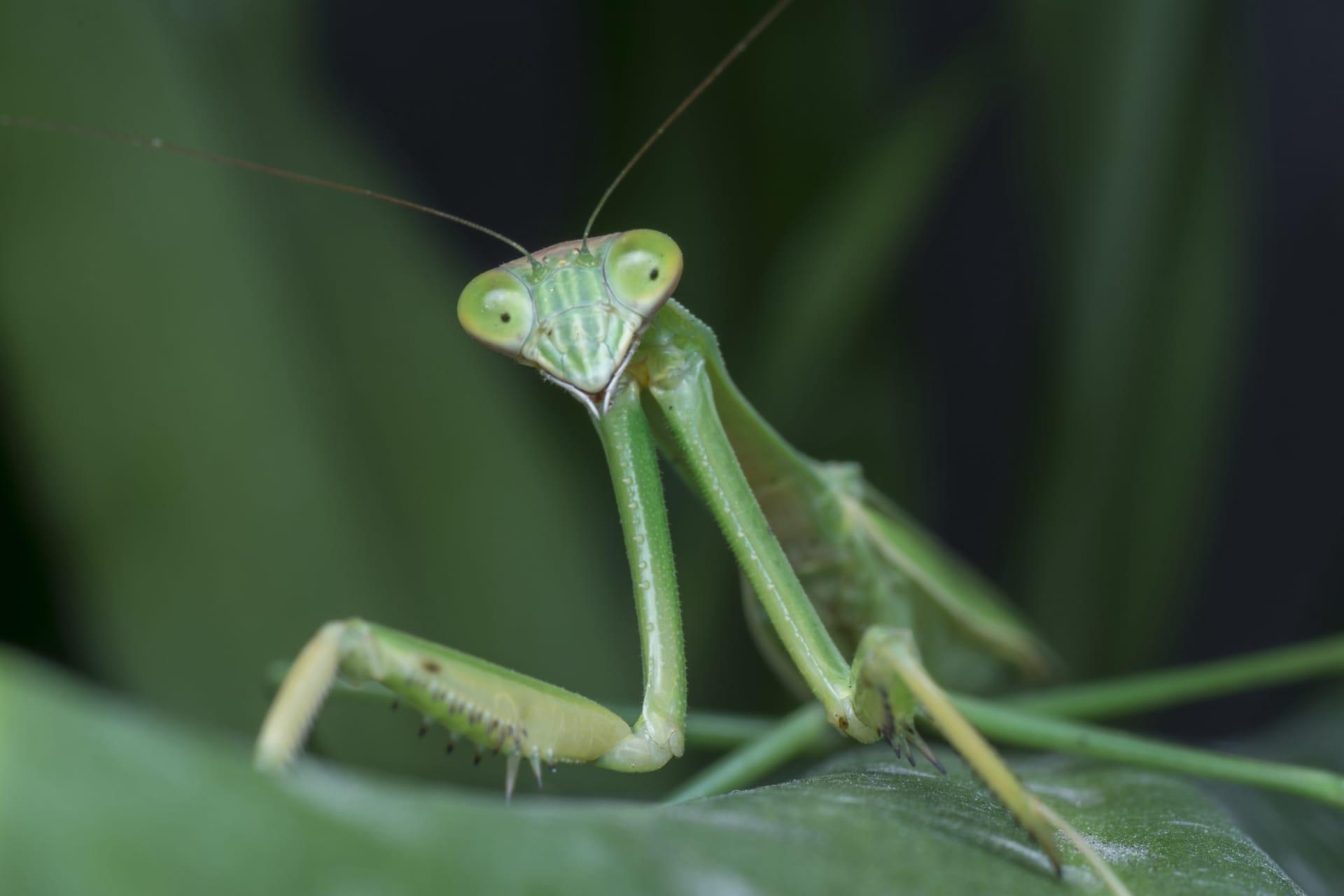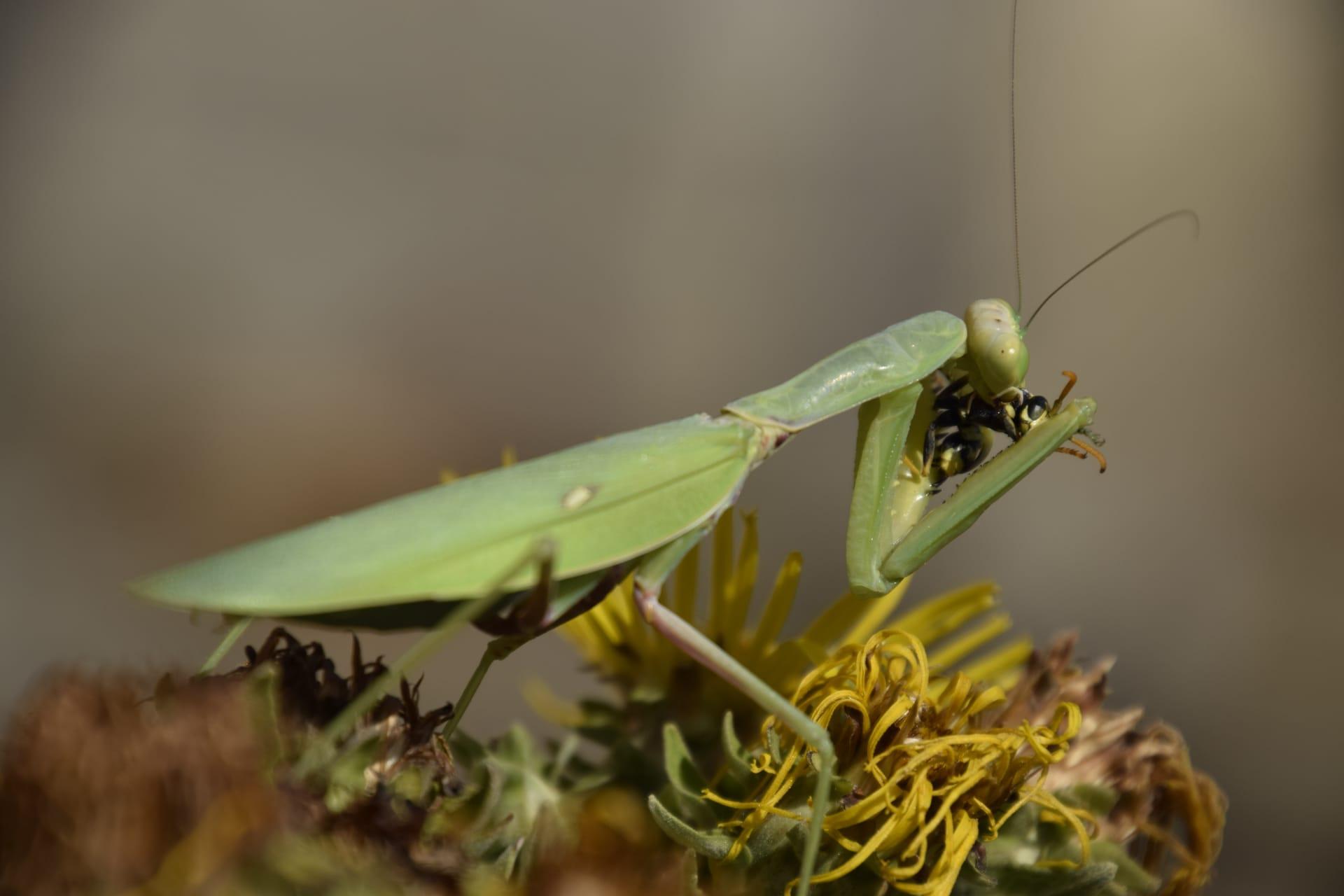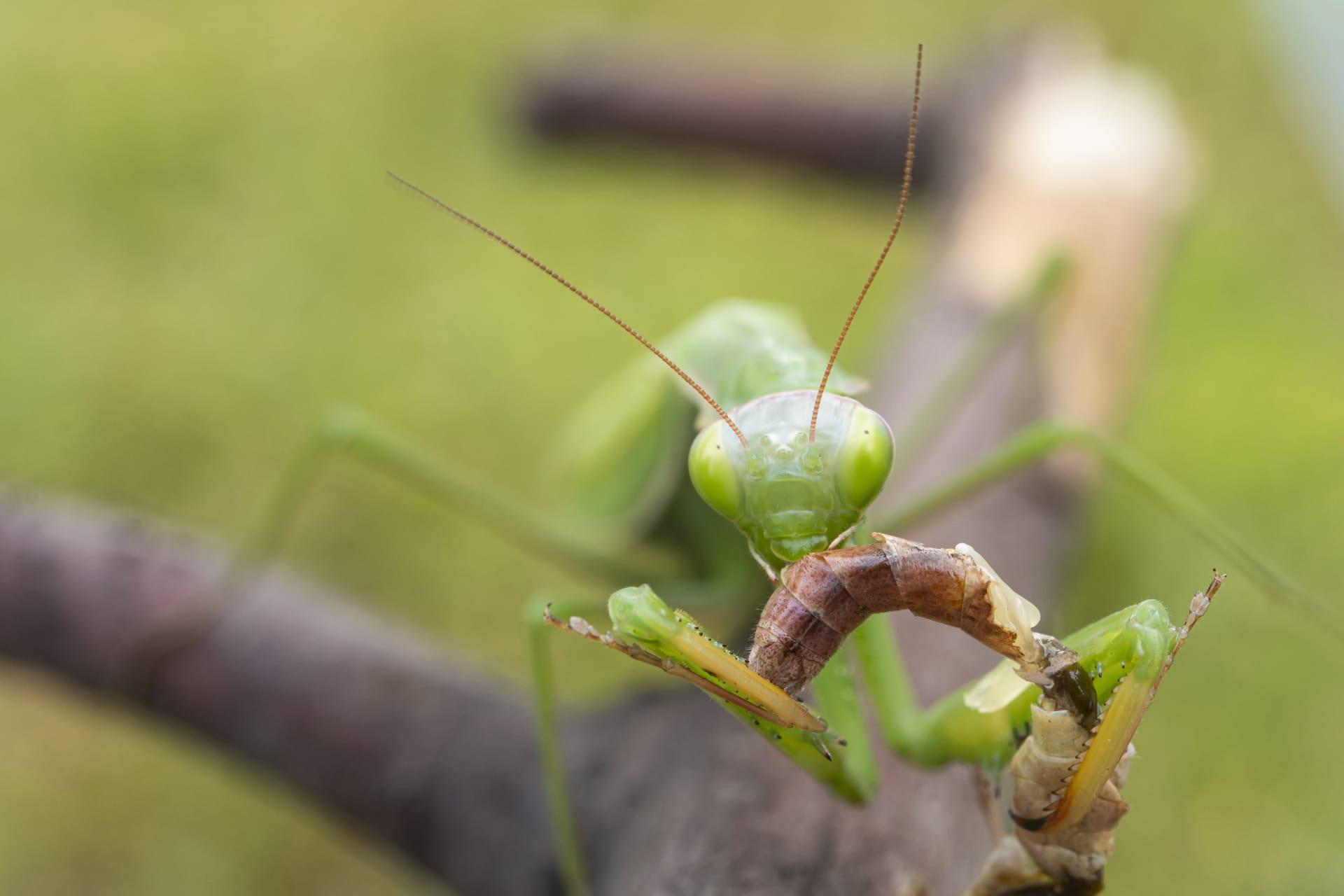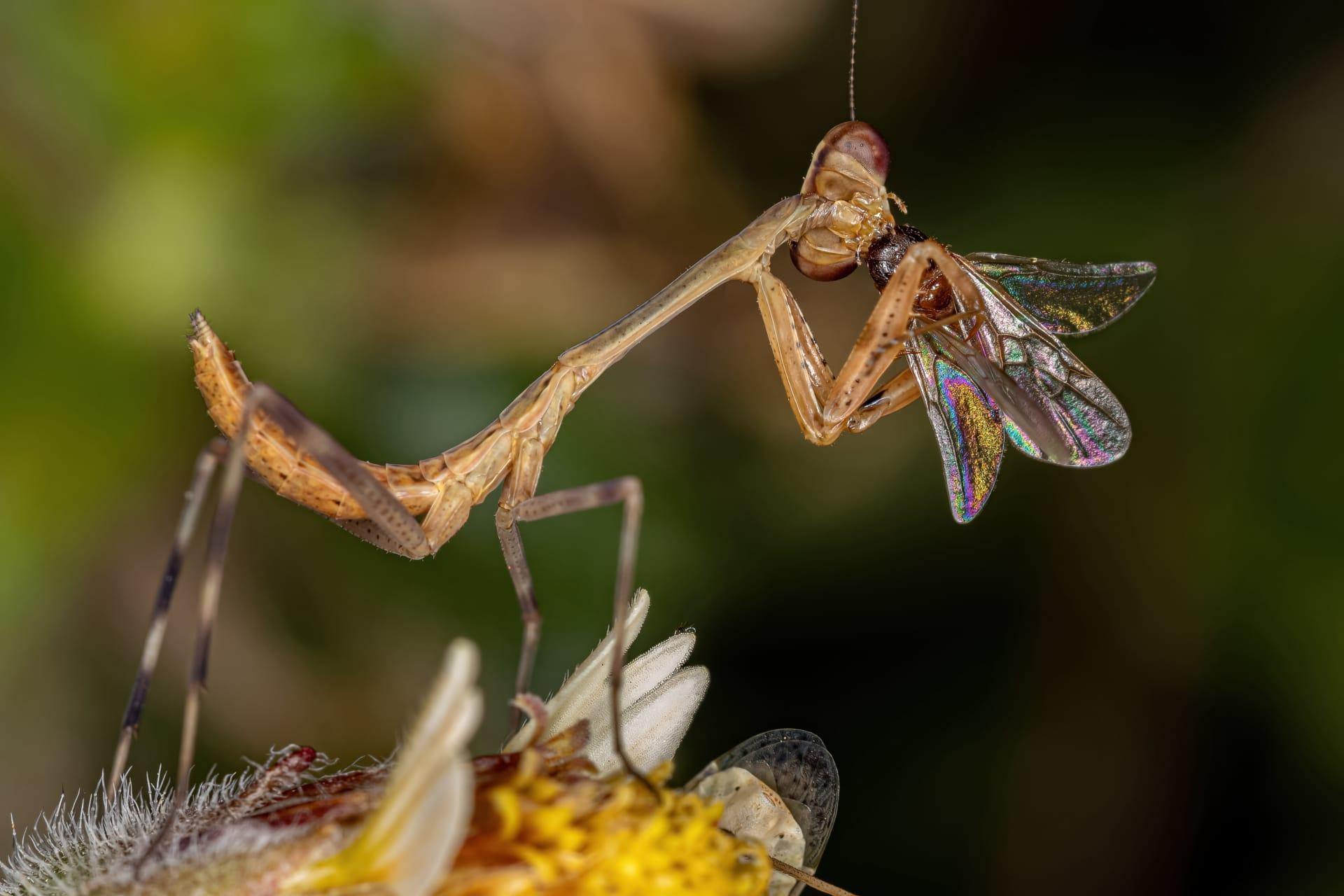Mantid Trivia
- Home /
- Trivia Question /
- Animal /
- Mantid Trivia
1
Question: What makes the mantid's hunting strategy so effective?
Answer: Mantids are masters of ambush, blending seamlessly into their environment. Their coloration varies from green to brown, matching their surroundings like leaves or tree bark. They wait motionlessly, and when prey comes close enough, they strike with lightning speed. Their forelegs, equipped with spikes, are perfect for snatching and holding onto prey. Some species can even capture small birds or mice!
Question: How do mantids see and how does this aid in their hunting?
Answer: Mantids have remarkable vision, essential for their predatory lifestyle. Their large, compound eyes provide a wide field of view and can detect movement up to 20 meters away. They can also see polarized light and ultraviolet light, which humans can't. This exceptional vision helps them to accurately judge the distance and timing for their strikes, making them efficient hunters.

2
Question: Is it true that female mantids always eat their mates?
Answer: This is a common misconception. While female mantids may sometimes eat their mates, it's not always the case. This behavior is more likely to occur in captivity where the male cannot escape. In the wild, males have a better chance of escaping after mating. The occurrence of sexual cannibalism depends on various factors like the female's hunger level and the environmental conditions.
Question: Do mantids only eat live prey?
Answer: Mantids generally prefer live prey, which they catch using their strong and fast forelegs. Their diet primarily consists of insects, but they can also tackle larger prey. However, in desperate situations, especially in captivity, mantids might eat dead insects. Their preference for live prey is linked to their hunting instincts and the movement of the prey triggers their predatory response.

3
Question: How long can mantids live?
Answer: The lifespan of a mantid varies depending on the species and environmental conditions. On average, most mantids live about 6 to 12 months. They go through a life cycle starting from an egg, then to a nymph, and finally to an adult. The longest phase is usually the nymph stage, lasting several months, during which they shed their skin multiple times as they grow.
Question: Can mantids fly and how effective are they in the air?
Answer: Yes, many mantid species can fly, especially the males, which are lighter and more agile. Their flying abilities vary among species. Some can fly long distances, while others use flight primarily for short bursts to escape predators or catch prey. Their flight is typically not graceful or sustained but is more a rapid and efficient means of locomotion when needed.

4
Question: Are mantids solitary creatures?
Answer: Yes, mantids are predominantly solitary insects. They come together only for mating purposes and do not live in groups. After hatching, young mantids are often cannibalistic towards their siblings if they come into contact. Their solitary nature continues throughout their life, making them effective and stealthy predators in their environments.
Question: Do mantids have any natural predators?
Answer: Despite being formidable predators themselves, mantids do have natural enemies. Birds, bats, spiders, larger insects like hornets, and even other mantids are known to prey on them. Their ability to blend into their surroundings is their primary defense against these predators, along with their quick reflexes to escape when detected.

5
Question: What role do mantids play in their ecosystem?
Answer: Mantids are important predators in the ecosystems they inhabit. They help control populations of insects, including pests that can harm crops and gardens. This predatory role makes them beneficial for natural pest control. Some people even use them in their gardens for this purpose, though their impact on pest populations is subject to debate.
Question: How do mantids reproduce, and what is unique about their eggs?
Answer: Mantids reproduce through a process where the male deposits a sperm packet into the female. After mating, the female lays eggs in a foam-like substance that hardens into a protective case called an ootheca. This case can contain dozens to hundreds of eggs, depending on the species. The ootheca is often attached to a plant stem or leaf and provides protection against the elements and predators, ensuring the next generation's survival.